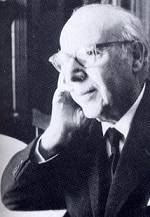


Yet aside from his famous (and famously short) editions of major and minor scales and slur studies, Segovia never put together his own guitar method. Many of those Segovia-edited works consist of studies and etudes, among them a heavily used edition of Sor studies first published in 1945, according to Guitar Salon International. Segovia commissioned hundreds of original works for the guitar, composed a few of his own, and issued a decent number of editions of works by famous composers. Segovia praises Tárrega as the father of the modern guitar but sticks to the Segovia origin story of being almost entirely self-taught.Īs bona fide students of Tárrega, guitarists Miguel Llobet and Pujol toured the world, but neither maintained the performance schedule and relentless ability to promote himself and his instrument that characterized Segovia during his long career. The other giant of the classical guitar, Andres Segovia, took the instrument to heights no one had reached before or since. The School of Tárrega, as his unwritten method and the followers of it are known, provided the inspiration - always prominently credited - for the methods written by Pujol, Pascual Roch and Julio Sagreras. Tárrega is regarded as the modern father of the guitar.

Looming over the literature and performance of the classical guitar from the late 19th century into the 20th were several prominent figures, including Francisco Tárrega, who nearly single-handedly dragged the guitar into the Romantic period through his teaching, compositions and transcriptions. The recording is also available on Spotify. Bungarten also recorded the Aguado study and Pujol variations for an MDG CD of Pujol studies using a 2018 Gary Southwell guitar modeled after an 1883 Antonio de Torres. The video's description doesn't say anything about Pujol, so this is quite a find. In this essay I will attempt to place the Aguado exercise and the Pujol variations into some kind of context within the canon of guitar methods, running from those of Fernando Sor, Aguado and Matteo Carcassi through Pujol's own comprehensive yet overlooked four-volume method.Ĭlick the image above for a YouTube video of Frank Bungarten playing the Aguado exercise and Pujol variations. Each variation focuses on different guitar techniques while at the same time venturing into harmonic territory that is very much of Pujol's time, the later Romantic and early modern periods of classical music. Volume 4 offers the short Exercise 19 from the influential guitar method by 19th-century giant Dionisio Aguado and follows it with Estudios LIV through LXX, 17 variations - the final one a fugue - composed by Pujol. While el segundo libro and el tercero libro both contain studies grouped together at the end of their respective volumes, Pujol makes a departure in el cuatro libro, tying a number of estudios together in the form of a theme and variations. Meant to reinforce various aspects of classical guitar technique, these selections are very musical - and surprisingly modern at times.

As with volumes 2 and 3, libro quartro ends with a number of studies.
EMILIO PUJOL VILARRUBI PDF COMPOSITION FULL
Volume 4 of Emilio Pujol's "Escuela Razonada de la Guitarra" - called el cuatro libro in Pujol's prefecio to the Spanish/French edition of his detailed 20th century guitar method - is less well-known in the English-speaking world because it was not part of the three-volume Editions Orphée English translation known as "Guitar School."īut Volume 4 is full of technical exercises and instructions - rendered in Spanish and French, of course. Emilio Pujol's 17 variations on an exercise by Dionisio Aguado Their place in the four-volume "Escuela Razonada de la Guitarra" and the teacher/author/composer/performer's body of work


 0 kommentar(er)
0 kommentar(er)
